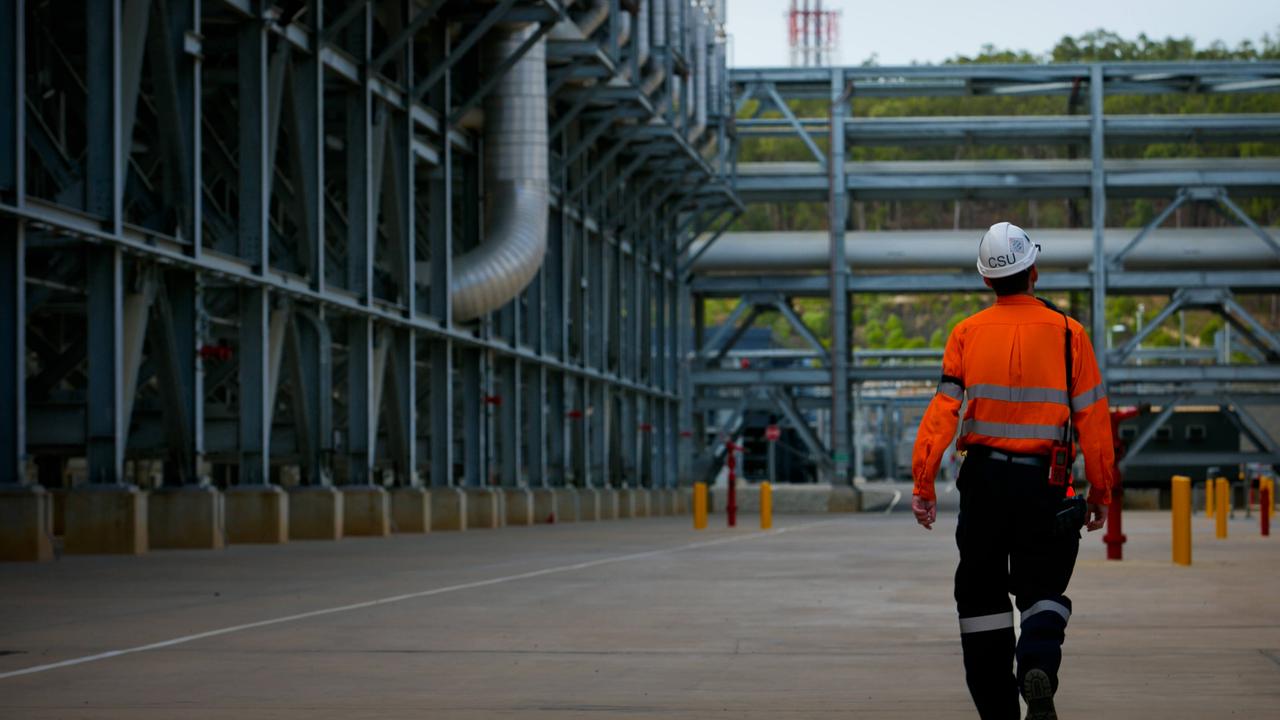Energy Minister Chris Bowen’s price caps won’t get more gas out of the ground
Energy Minister Chris Bowen is offering more dysfunction and has missed his chance to create a sustainable gas market.
Business
Don't miss out on the headlines from Business. Followed categories will be added to My News.
The one consistency in Chris Bowen’s attempt to force down gas prices is the $12 cap will still be in place when the next federal election that is due in two years.
That’s the reality about today’s energy market, which all about the politics rather than getting more gas out of the ground and into the domestic market.
Bowen has come back to the market with a watered-down version of his east coast gas code of conduct but it still has the ugly ambition of trying to control prices in that are firmly linked to a global market.
The second round of proposals for the mandatory code of conduct for the east coast gas market doubles down on pricing caps, extending them to mid-2025. But the latest version offers a number of carve outs for smaller gas producers and those that effectively supplying the domestic market with their entire output. This pushes the weight of the code of conduct back onto LNG exporters putting tougher rules around how they sell any uncontracted gas back into the domestic market.
But through its intervention the Albanese government and specifically Climate Change and Energy minister Bowen have offered nothing in the way of a solution to create a sustainable gas market, leaving Australia stuck on its energy roundabout. Bowen knows gas will play a part in the renewables shift and will continue to underpin industry well beyond 2030.
While the Ukraine war has been blamed for gas producers “profiteering”, the inability of Australian gas market to respond to global stresses highlights deeper underlying stress.
As one gas chief executive tells The Australian: “(Canberra) is intervening because the reality is that the governments across the board – state and federal – have had a dysfunctional policy with respect to energy development in Australia. And that has led to the high domestic gas prices. The war in Ukraine is only a small fraction of the problem yet that is the rationale that the government is using for the intervention”.
Even for those producers not directly impacted, a price cap for another two years represents yet another layer of regulatory risk on an industry that plans and builds in cycles that ranges from five to 10 years.
For his part Bowen argues the cap will ensure domestic prices are reasonable over the forecast period by establishing a “price anchor”. The new version of the rules will deliver certainty for producers to invest in supply and won’t disrupt LNG export commitments, he adds.

But the threat of controlling prices in free global market is paving the way for more damage given it seriously hurts new investment.
As long as the threat of intervention is live and no sunset clause there is little incentive for big producers to get more gas out of the ground and send it into Victoria and NSW where it is badly needed. That will only serve to compound forecasts of potential gas market shortages from this winter and beyond.
Players like Woodside have already effectively put on hold efforts to unlock more gas from the vast but rapidly maturing Bass Strait field that would be earmarked for the domestic market.
In a recent investor briefing Woodside chief Meg O’Neill confirmed their study of an LNG import terminal on the east coast had been “paused” as a result of the gas market intervention, indicating gas can be sold at contracted prices offshore. At the same time the Bass Strait joint venture with Woodside and ExxonMobil was operating under six-month budget cycles. That’s not a lot of long-term planning there.
O’Neill also highlighted how many alternative growth projects – including hydrogen – were available to Woodside offshore. While the latest version of the rules appear to exempt Woodside’s Victorian joint venture from the cap that’s still a year’s worth of planning out of the window for investment to get back on track again – if it returns.
Other domestic projects from players including Santos to Cooper Energy, as well as Queensland’s onshore development, have remained in limbo since the rules were rushed through last December.

It was the global tensions of the Ukraine war that was the trigger for sending global gas prices soaring. But by the time the Albanese government wanted to make an example of gas industry, prices were already falling fast with the global market adjusting while Europe’s mild winter helped. This highlighted the unnecessary nature of the intervention.
Still, current domestic prices are already skirting $12 cap which now risk having the unintended effect of putting a floor under prices. Industry players argues the price signals means the risk on pricing is clearly on the upside.
Figures from the Australian Energy Market regulator show in early December spot gas prices were averaging $15/GJ and then have fallen further to be stuck at the $12/GJ cap into the new year with several domestic deals struck at the matching price.
From a hard gas price cap, to an expected overhaul of the petroleum resource rent tax in Treasurer Jim Chalmers’ upcoming budget and a lukewarm response to opportunities from a US-style Inflation Reduction Act are incremental in isolation. But they all add up to be a big disincentive for energy operators to spend money here when it is needed most.
And the bigger threat to Australia is the loss of export capacity where emerging LNG majors such as the US are eyeing export contracts to Asia and PNG is fast developing its own industry.
The gas industry is desperate for a signal to work with the government in order to fix the supply logjam hurting domestic market. But any agreement there is unlikely to make for great politics.
Latitude digs in
It was a defiant Mike Tilley, the former Challenger boss and one time Merrill Lynch banker who now chairs Latitude, who was holding firm on meeting demands to pay a ransom after a massive cyber hack hit the finance company in recent weeks.
The hack on the company that offers interest-free finance deals for retailers such as JB Hi-Fi and Harvey Norman, resulted in details including drivers licences stolen from nearly 8 million customers. Fronting Latitude’s annual meeting Tilley finally issued a top-level apology.
However, speaking to shareholders Tilley pointed out the board’s relative silence on the matter in recent weeks was due to a criminal investigation underway on the hack by the federal police.

While there has been no evidence of activity since March 16, as the Medibank experience showed, the threat can return even after it appears the cyber hackers had gone away. Tilley said he was able to give limited information but declared no ransom would be paid to the attackers. This continues a public stand made by Medibank that has now set the benchmark for corporate Australia.
It comes as the Albanese government is eyeing whether to make ransom payments illegal. Bigger companies such as Latitude, Optus and Medibank could usually ride out a cyber attack but it would put extreme pressure on smaller players. Meanwhile, as my colleague David Swan revealed, some like energy major AGL argue a ban on ransoms could severely limit options in the event of a crisis.
Tilley meanwhile said any one-off financial costs from Latitude’s attack are likely to be substantially covered by insurance. The Latitude hack came through a third party vendor, which is a “significant” international tech company, he added. Regardless of how the attackers gained entry, Tilley said Latitude must take full responsibility for protecting its customer data. Investors backed his stand, delivering 99 per cent support in a vote on Latitude’s remuneration report.
Citi moves
Top Citi investment banker Mark Woodruff has been named as chief executive of the Wall Street bank’s Australian and New Zealand operations. It’s a slimmed down Citi aimed at investment and institutional banking after exiting its Australian consumer banking business a year ago. Last year it finalised the sale of its credit card, mortgages and deposits that included 800 employees to National Australia Bank for more than $1.2bn. Originally from Melbourne, Woodruff is a two-decade veteran of Citi’s investment banking arm, where he joined the bank in New York. Most recently Woodruff was the head of markets in Australia. Former Citi Australian boss Marc Luet, was recently appointed CEO for Citi in Japan.
johnstone@theaustralian.com.au
More Coverage
Originally published as Energy Minister Chris Bowen’s price caps won’t get more gas out of the ground








